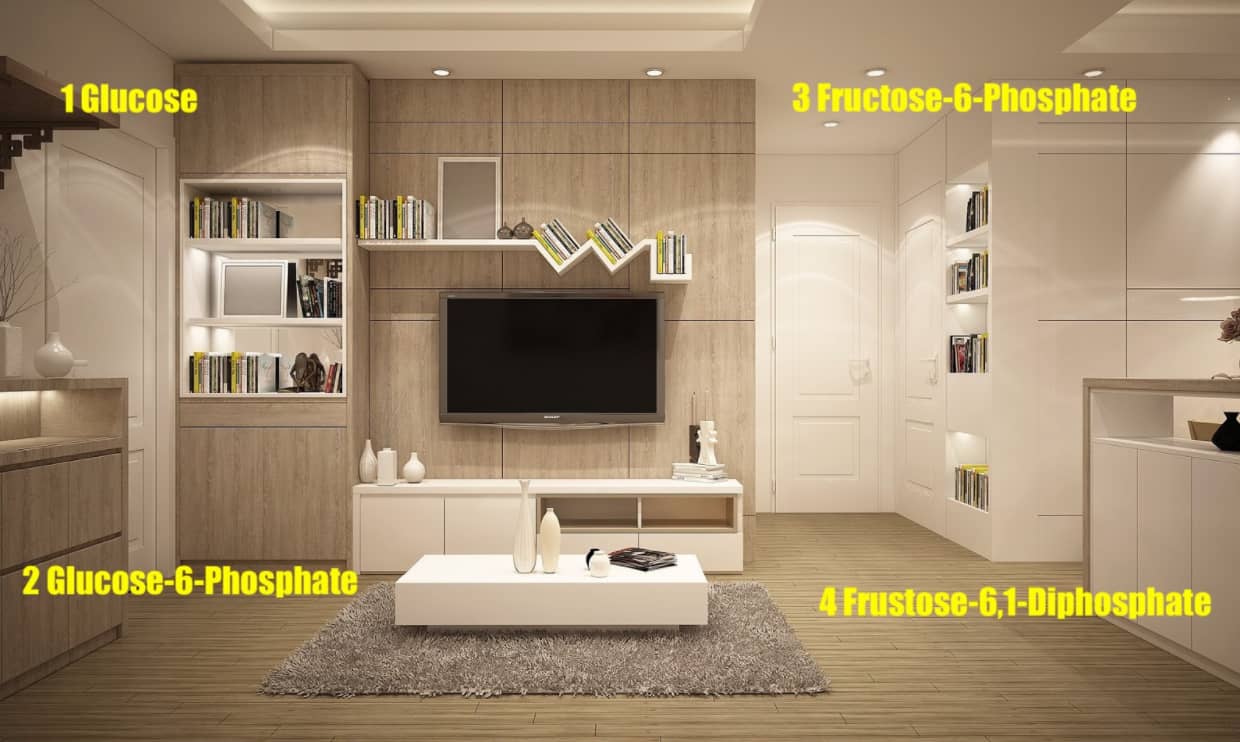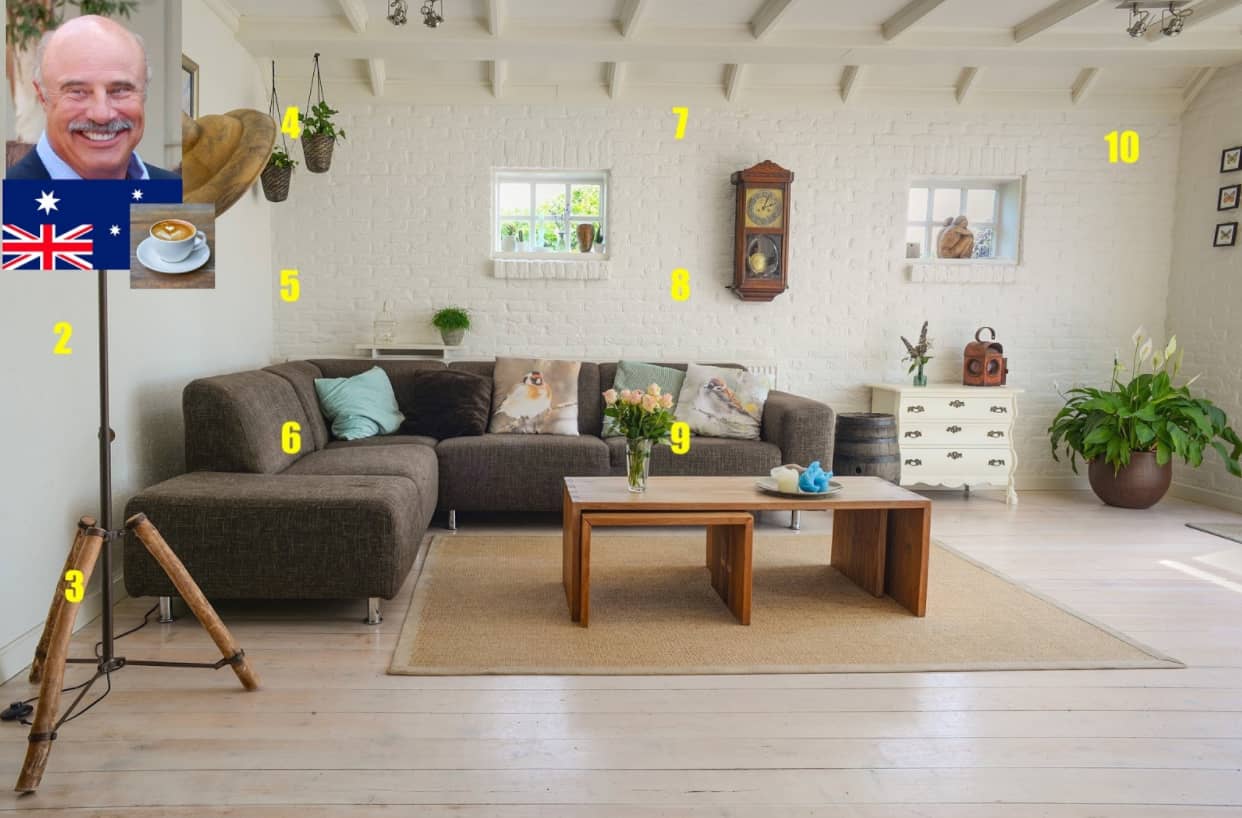
I can’t blame you. The Internet is littered with all kinds of goofy glycolysis mnemonic examples that might work. But if they do work, though might not last for long.
And that’s no good if you need to sit for an exam. Especially not if you want to be the best possible professional in your field.
So what does a bad glycolysis mnemonic look like?
Try this one on for size:
You might be told to memorize a sentence like “Gophers gluttonize fried food” as an acronym for some of the glycolysis intermediates:
- Glucose
- Glucose-6-Phosphate
- Fructose-6-Phosphate
- Frustose-6,1-Diphosphate
Can you see the big problems with sentences like these?
First, they’re not mnemonic.
Memorizing the first letter of the word doesn’t necessarily help you remember the core word, after all.
Second, you either need to make very long sentences or a series of small sentences to craft a mnemonic for glycolysis.
Well, let me ask you this:
What if there’s a better way? One that helps you remember everything related to glycolysis and many other scientific facts too?
There is a better way and we’ll cover the perfect strategy on this page. Let’s dive in.
How to Remember Glycolysis With This Glycolysis Mnemonic
The Memory Palace is the ultimate mnemonic device. It works well for learning glycolysis, which is basically defined as a catabolic process of oxidizing and then breaking sugar down into pyruvate molecules.
It works so well because it lets you layer highly meaningful associations in a mental location that you already remember. This is the key to making much stronger mnemonic images across the board.
To begin, you’ll want to create your first Memory Palace for a total of three. This special technique will help you rapidly memorize:
- The steps of glycolysis
- The glycolysis enzymes
- The glycolysis intermediates
What is a Memory Palace?
Basically, you will use a home or familiar building to place associations that trigger memories of the target information. And you will link the kind of information you are trying to memorize to the mnemonic strategy itself.
I know that this can sound quite technical, but all medical mnemonics or memory tools related to chemistry are easy one you get the hang of them.
So let’s look at examples using each of the three missions involved in learning glycolysis thoroughly.
How to Memorize The Steps Of Glycolysis
There are ten steps in total:
- Phosphorylation of glucose
- Isomerization of Glucose-6-phosphate
- Phosphorylation of fructose-6-phosphate
- Cleavage of fructose 1, 6-diphosphate
- Isomerization of dihydroxyacetone phosphate
- Oxidative Phosphorylation of Glyceraldehyde 3-phosphate
- Transfer of phosphate from 1, 3-diphosphoglycerate to ADP
- Isomerization of 3-phosphoglycerate
- Dehydration 2-phosphoglycerate
- Transfer of phosphate from phosphoenolpyruvate
To use the Memory Palace technique, assign 10 spots in a room, or a series of rooms. In this case, I chose my friend Stephanie’s house because “step” is in the name Stephanie.

Remember how I told you that the key is to rely on information that is already in your memory? This is an example, and you can do the same by simply thinking about places you know that have a similar sounding word to the information you’re trying to memorize.
Next, start with the first step and create an association.
For example, to remember “phosphorylation of glucose,” you can think of someone like Dr. Phil going to Australia for a latte he dramatically dumps full of sugar. Again, the choice of image here isn’t random. I chose it because the name “Phil” has the same “ph” and basic sound as “phosphorylation.”
You then mentally place the image you chose on the first “Magnetic Station” of the Memory Palace.
Then, when you try to remember the first step of glycolysis, you think of that first station. Phil + Australia gives you the sound of “phos.”
The conceptual fact that he’s going there for a latte helps you recall the second part of the word phosphorylation. Imagining him dump a bunch of sugar into the latte helps you remember that glucose is involved.
Sound tricky?
In the beginning it might. But with a small amount of practice, you’ll be like many of my successful students who rapidly recall even more complicated sets of steps than these.
How to Memorize The Glycolysis Enzymes
For the sake of brevity, let’s look at the main enzymes of glycolysis, hexokinase, phosphofructokinase, and pyruvate kinase.
To memorize these names, you’ll follow a similar process.
In this case, you’ll probably want to know that adding -ase to a word tells you that enzymes are involved. In some cases, it may be applied to indicate the name of a substrate upon which the enzyme acts.
To memorize that fact, create your own glycolysis enzymes mnemonic.
For example, you could use a similar word like “ace” or a pop culture figure like Ace Ventura, Pet Detective to add to the core word each time.

With that mnemonic in mind, imagine a room like your bedroom.
Since hexokinase sounds like the “hex” a witch could cast on your next of kin, you can combine that image near one corner of your room with an Ace of Spades or Ace Ventura.
Moving to a wall, you make Dr. Phil the “foe” of Forrest Gump fighting over fruit to create a mnemonic for phosphofructokinase.
Pyruvate kinase seems tricky at first glance, until you think about pyros lighting fire faster than karagroos can battle Darth Vader.
Notice that these words are as close to the sounds you want to memorize as possible. They don’t have to match 100%, but do the best that you can.
To learn more about how to come up with associations like these quickly, learn the pegword method.
You can also sign up for this:
How to Memorize The Glycolysis Intermediates
Students are typically responsible for 11 intermediates. And this is where you get long and difficult to memorize sentences as mnemonic examples.
But can you see by now how the Memory Palace technique with some elaborative encoding is far better as a mnemonic strategy?
With one simple Memory Palace, you can rapidly memorize all eleven of these quickly:
- Glucose
- Glucose-6-Phosphate
- Fructose-6-Phosphate
- Frustose-6,1-Diphosphate
- Dihydroxyacetone-phosphate
- Glyceraldehyde-phosphate
- 1,3-Biphosphoglycerate
- 3-phosphoglycerate
- 2-phosphoglycerate
- Phosphoenolpyruvate
- Pyruvate
The process is the same, but if you find the words difficult, break them down to their individual syllables. Then apply the strategies discussed in my post on memorizing vocabulary.
Once you have your strategy for memorizing the words, arrange space in one or more rooms. Finally, assign associations to each space that link to the terms.

The main tricks involved with knowing how to remember glycolysis with this technique boil down to:
- Preparing your Memory Palaces in advance
- Focusing on the alphabet and breaking up the syllables using what I call Word Division in the Magnetic Memory Method Masterclass
- Reviewing the material you’ve placed in each Memory Palace strategically
How To Learn Glycolysis In A Weekend (Or Faster)
At this point, some readers will realize that they’re now sitting on an incredible technique, a treasure that combines many types of memory and has been available to humanity for thousands of years.
Others might feel nervous. It may be a new way of thinking and you might worry that you’re not creative enough.
Please don’t feel that way. As I’ve hoped to express in this tutorial, it’s not about creativity.
It’s about taking a location you already know and bringing individual spots (like walls and corners) together with pop culture information.
In other words, everything you’re drawing upon is already in your imagination. You just need to practice drawing it out.
Put in a small amount of time to learn these techniques, and everything you study from this point on can be learned so much faster.
So what do you say? Are you ready to memorize using your own glycolysis mnemonic solutions?
Dive in and enjoy this incredible learning journey!
Related Posts
- How To Remember The Amino Acids: A Proven Mnemonic
If you need to know how to remember the amino acids, this detailed tutorial is…
- Cranial Nerves Mnemonic: Remember All 12 Cranial Nerve Names in Order
A good cranial nerves mnemonic can be hard to find. Here are 12 you can…
- How to Memorize Functional Groups (Once and For All)
You don't have to struggle to memorize functional groups. These simple tips make learning them…





